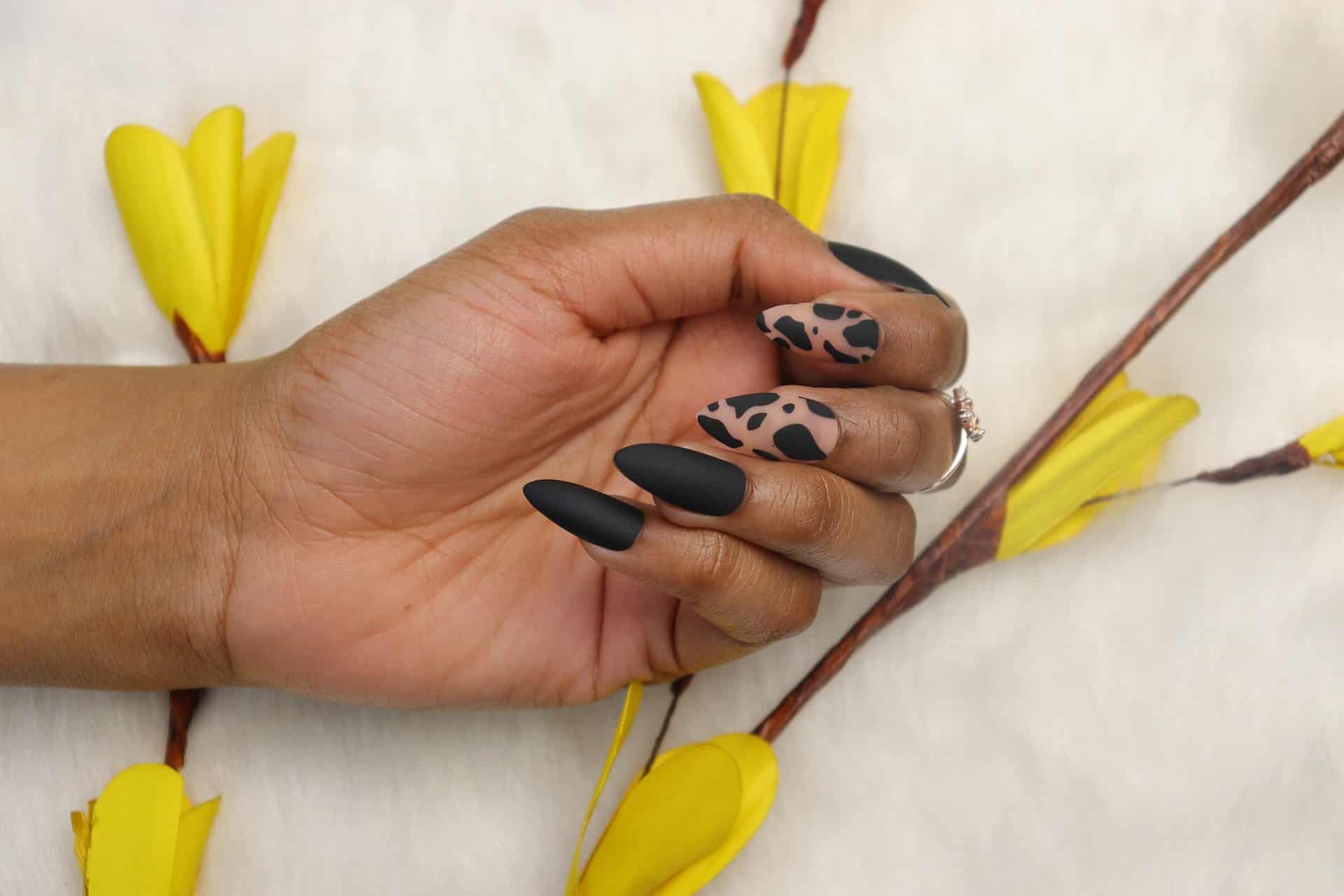How to take off acrylic nails without acetone at home?

With acetone being such a powerful chemical solvent, excess use may cause serious damage to your nails. Many people search for safer ways to remove acrylic nails and avoid dehydration and brittleness. Today we’ve rounded up five ways you can remove acrylic nails without acetone. Take a look!
Table of Contents
What are acrylic nails?
To perform an acrylic manicure, the nail technician will combine a powder made of polymer and a liquid known as a monomer. These two will form a sort of dough that the manicurist will then apply to your nails with the help of a nail brush. Depending on the desired length of the nails, acrylics can be applied strictly to your natural nails or to nail extensions. One of the most significant differences between acrylics and other types of manicures is that acrylics don’t require curing under a UV/LED lamp, as they harden when coming into contact with air.
How to take off acrylics without acetone?
The most common way to take off this type of manicure involves soaking your nails in acetone until the acrylic softens enough to be removed. Although this is a fast and easy method, exposing your fingers to acetone can, in the long run, have a negative effect on your skin and nails. As it has strongly dehydrating properties, you can end up with dried-out cuticles and brittle nails. That is why it’s worth considering alternative ways to remove those acrylics. Here’s what you can try out instead.
Acetone-free nail polish remover
As you’re probably aware, not all nail polish removers contain acetone. This allows you to soak your acrylics in a remover that will potentially cause less damage. On the downside, this method takes more time. Instead of soaking your nails for twenty minutes, you will have to spend around forty minutes with your fingers in the remover. It is around this time acrylic should start to come off. Any remaining acrylic can be removed with a nail file.
How to take off acrylic nails with hot water?
Another soaking method involves pouring warm water into a bowl and then adding a few drops of hand soap. Place your fingers in the bowl and soak them for at least twenty to thirty minutes. Make sure you move your nails every once in a while to allow the water to penetrate under the acrylic layer. If your acrylics are stubborn, wait for an extra ten minutes. Finally, once they’re nice and loose, remove them with the help of an orangewood nail stick.
Cuticle oil to remove acrylic nails
A great way to avoid harsh chemicals and nourish your nails at the same time is to use cuticle oil. Soak a cotton ball in the oil and hold it against each nail for at least five minutes. For convenience, you can place the cotton ball on your nail and wrap it with foil. After the required time has passed, remove the remaining acrylic with the help of an orange manicure stick.
How to remove acrylic nails with floss?
If you want to try out the dental floss removal method, ensure your acrylics are already loose. In case they aren’t, soak them in some warm water first. Then take a dental floss stick and press it down on your natural nail, just below the beginning of the acrylic. Next, try to move the floss underneath the acrylic, slowly going back and forth toward the top of the nail. As this is a more risky method, we recommend being extremely careful.
Is it possible to take off acrylic nails with a credit card?
You’re probably used to using your credit card to pay, but did you know you can also use it to remove acrylic nails? Overall, the credit card method is very similar to the dental floss one and works best on loose nails. Before beginning, use an orange stick to peel the edges of each nail upward. This will create a gap between your natural nails and the acrylic, where you can slide in the credit card. Again, slowly going back and forth, work your way toward the top of your nail, thus removing the acrylic.





